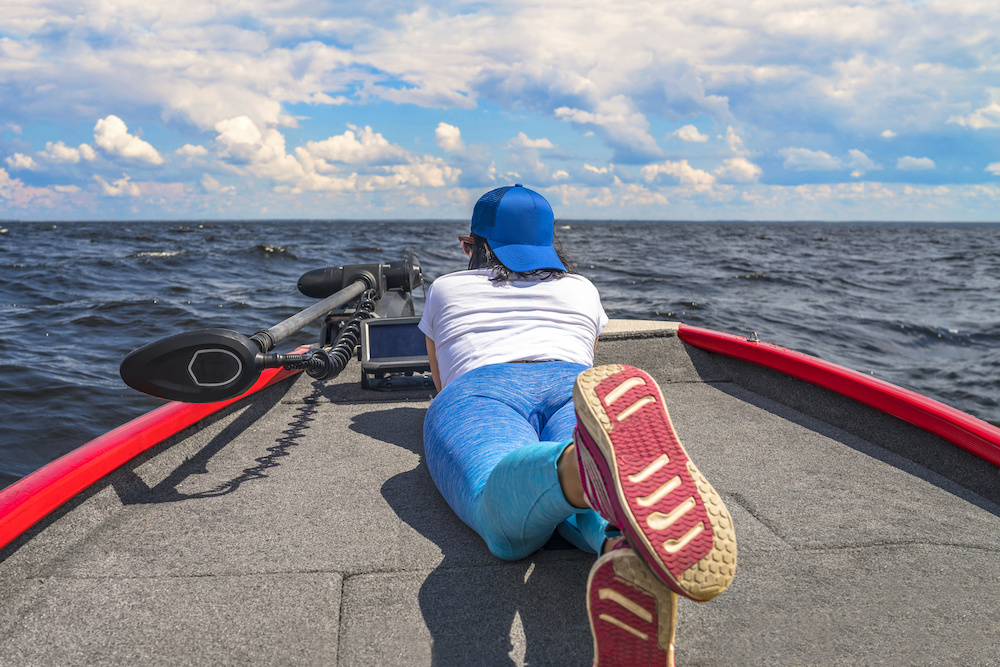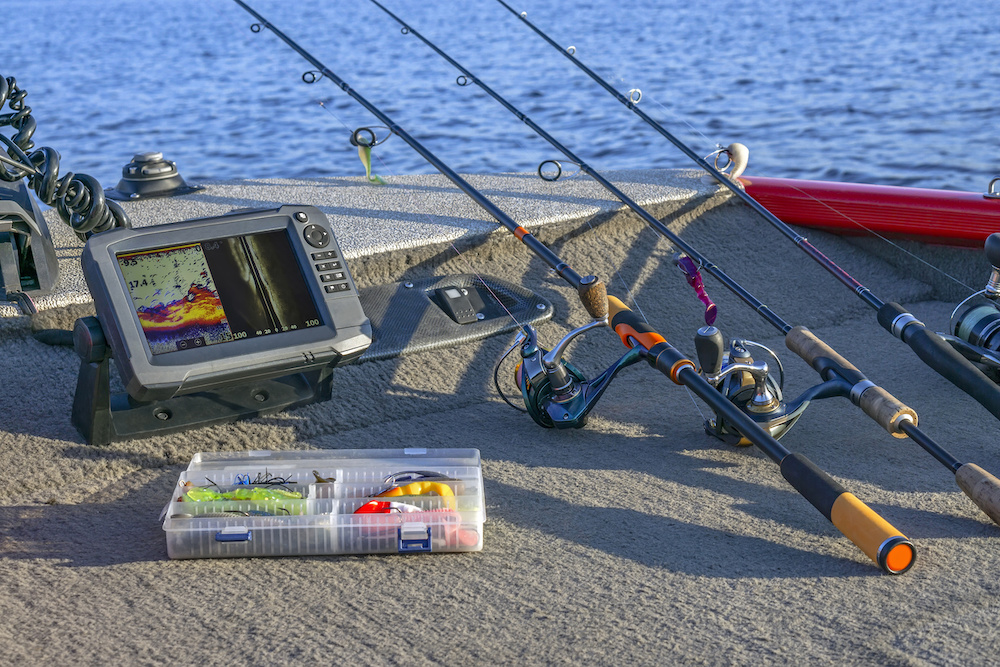How To Read a Humminbird Fish Finder: The Basics
We may earn a commission for purchases using our links. As an Amazon Associate, we earn from qualifying purchases.
Fishfinders have become extremely popular fishing tools over the years.
In fact, newer models even have GPS navigation and chart plotting abilities.
These extra features that the more expensive models come with are extremely useful.
But regardless of which unit you choose, you’ll still need to learn how to read them to understand what’s on the screen.
Humminbird is a reputable brand that has been developing fishfinders since 1971.
Interested in purchasing a fish finder from this brand? Check out our in-depth Humminbird Helix 5 review as well as our Humminbird Helix 7 review.
If you’ve recently invested in a fishfinder from this brand, stick with us to learn how to read a Humminbird fish finder.
How to Read a Humminbird Fish Finder
Fishfinders can show you exactly what’s below your boat by using sonar technology.
Sonar technology works by transmitting sound waves out into the water.
Then, using the speed and strength of the return signals, it can intelligently decipher what’s down there.
Your fishfinder will have a transducer that you install below the water line and a head unit that will most likely sit next to where you fish or troll from.
The transducer sends and receives these sound signals and converts the sound into electronic signals.
After that, it sends these signals to the head unit.
The head unit, which contains your display, is basically like a mini-computer.
It houses software with which to decode these signals.
Most fishfinders will tell you the water depth and temperature and where underwater objects and fish are.
How to Read a Humminbird Fish Finder Screen
Learning how to read Humminbird fish finders is much easier if you are stationary in your boat.
That way, the screen won’t change as much when you are looking at it, and your depth will be fixed.
The transducer is constantly pinging information back and forth, and the newest information will always appear on the right-hand side of the screen.
Then, it will slowly move off to the left as it is replaced by fresher updates.
Remember that what you are seeing is what the transducer sees.
Therefore, if you have a transom-mounted transducer, your reading will be from the back of the boat.
Digital Readings
The first things you should familiarize yourself with on your Humminbird fish finder screen are the digital readings.
You will have your current water depth in one corner, and the water temperature (usually) right below it.
Down one side of the screen, you will also see ascending numbers from top to bottom.
These numbers help you estimate the depth of a particular object or fish.
Knowing how to read a Humminbird fish finder screen to identify fish is one thing, but you’ll catch a lot more fish if you combine this information with knowledge.
Knowing what depth your fish like to hang out in and what temperature water they like can also be a great help.
Simply having a depth finder aboard your boat is also an excellent help for finding drop-offs and honey holes.
If you’re on the lookout for a drop-off to fish at, you can simply troll around the lake watching the depth change.
Still, a fishfinder tells you much more than just how far away the bottom is.
Water Bottom
Now take a look at the water’s bottom, or rather, the line that represents the water’s bottom on the screen.
A fishfinder uses the strength of the return signal to tell you whether the bottom is hard or soft.
A thick, dark line indicates a hard bottom, and a thinner, lighter-colored line represents a softer, muddy bottom.
Knowing the difference between the two can help you track certain species of fish attracted to different bottoms depending on the season.
For example, you’ll find bass warming up and hunting crayfish around rocks during the pre-spawn early on in the season.
Later in the spring, you can find them hunting bluegill in mucky, soft bottoms.
The bottom substrate can also give you tips on what kinds of lures to use there.

Underwater Structures
Right above this bottom line, you will see objects or lines that extend upwards from the bottom.
Activity on your screen that seems to be attached to the bottom is usually a good indicator of underwater structure.
As you know, identifying structures like this is excellent for finding fish that like to hang around in vegetation, sunken trees, or anything else that might be down there.
Fish
Depending on the model you have, you may or may not have fish ID technology that shows you a fish icon where the device thinks a fish might be.
Though, you can actually learn a lot more by reading fish arches instead.
In fact, many keen anglers will have this function available but never use it.
When a fish swims underneath your boat through your transducer’s beam, an arch will appear on your screen.
Many people make the mistake of thinking long arches equal big fish.
Remember that the screen shows you time, so a long arch simply means that the fish was in your beam for longer.
A shorter arch represents a more quickly moving fish.
So, if the fish doesn’t swim all the way through your beam, you will also have partial and half arches.
If you want to target the biggest fish (obviously, you do), what you should look out for is the thickest arch.
Many Humminbird fishfinders these days have color screens that will also color-code the fish arches for you to help make the difference more visible.
The colors your fishfinder uses will depend on what palette you have it set on.
On most units, a yellow arch indicates a bigger fish.
Tips and Tricks to Make the Most Out of Your Humminbird Fishfinder
Now that you know the basics of how to read Humminbird fish finders, it’s really just a matter of getting some experience in using one.
In fact, practicing using your fishfinder is so important that it is even our first and favorite tip.
1. Practice Makes Perfect
As with most things in life, practice makes perfect.
This means that the more you use your fishfinder, the better you will understand what it is you’re seeing.
Not only will you be able to confirm your sightings, but you’ll also get more used to the color palette you’ve chosen and be able to read the information quickly.
2. Learn More About Your Fish
You may know everything there is to know about bait and lures, but now that you have more information at your disposal, it’s time to cash in on it.
Do some research and determine what water temperature your target species likes and how their feeding habits change over the season.
In doing this, you will have better chances of getting a big catch.
3. Fine Tune Your Sensitivity
Sometimes, your fishfinder may appear to be a complete mess with dots, dashes, and blobs all over it.
This can happen in more turbid, murky water because the thick algae will give the transducer false readings.
If this happens to you, just try turning down your fishfinder’s sensitivity setting until most of the clutter disappears.
4. Read the Owner’s Manual
Yes, we know it sounds boring, but the more you get to know your device, the better.
You may discover that it has some great features that will help you tremendously, such as zoom and freeze frame.
Some models will also have a side-scan option, and many anglers like to split the screen between down scan and side scan for a clearer picture.
Help From Your Humminbird
Hopefully, this article helps you understand how to read a Humminbird fish finder so that you can use the information to make your future fishing trips more rewarding.
Watch out for those thick fish arches, and good luck in catching a new trophy fish for your wall.

